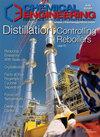Production of tungsten powders with highly developed surface
Q Chemical Engineering
引用次数: 0
Abstract
The process of producing tungsten powders with a highly developed surface by reducing its oxide compounds with magnesium vapor in the temperature range 600—750 °C under dynamic vacuum (0.01 kPa) and with a residual argon pressure in the reactor 0.5—10 kPa has been studied. During the reduction of magnesium and calcium tungstates, tungsten powders were obtained with a specific surface area of 40 m2·g–1, characterized by a mesoporous structure.生产表面高度发达的钨粉
研究了在动态真空(0.01 kPa)温度600 ~ 750℃、反应器内残余氩气压力0.5 ~ 10 kPa条件下,用镁蒸气还原氧化钨化合物制备表面高度发达的钨粉的工艺。在还原钨酸镁和钨酸钙过程中,得到的钨粉比表面积为40 m2·g-1,具有介孔结构。
本文章由计算机程序翻译,如有差异,请以英文原文为准。
求助全文
约1分钟内获得全文
求助全文
来源期刊

Chemical Engineering
工程技术-工程:化工
CiteScore
0.06
自引率
0.00%
发文量
0
审稿时长
6-12 weeks
期刊介绍:
Chemical Engineering is published monthly by Access Intelligence, primarily for chemical engineers and related technical people in the chemical process industries (CPI), as well as at engineering, design and construction companies that serve the CPI. The CPI consist of: chemicals, including petrochemicals; drugs and cosmetics; explosives and ammunition; fats and oils; fertilizers and agricultural chemicals; foods and beverages; leather tanning and finishing; lime and cement; synthetic fibers; metallurgical and metal products; paints and coatings; petroleum refining and coal products; plastics; rubber; soap and detergents; stone, clay, glass and ceramics; wood, pulp, paper and board; other chemically processed products.
 求助内容:
求助内容: 应助结果提醒方式:
应助结果提醒方式:


